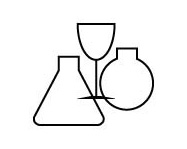Avondlezing door prof.dr. M.A.G.J. Orrit (Leids Instituut voor Onderzoek in de Natuurkunde (LION)), georganiseerd door de Haarlemse Chemische Kring.
De lezing wordt voorafgegaan door de jaarlijkse Algemene Ledenvergadering.
Samenvatting
De optische detectie van enkele moleculen, die wij bijna 30 jaar geleden ontwikkeld hebben, is de basis geworden voor veel biofysisch werk, onder anderen DNA sequencing en superresolutie in de optische microscopie (Nobelprijs voor Scheikunde 2014). Dankzij optische microscopie en spectroscopie, is het nu mogelijk om allerlei processen op de schaal van één molecuul te bekijken. Ik zal een paar voorbeelden van recente experimenten van onze groep beschrijven. Deze voorbeelden laten zien hoe verrassend gevarieerd de wereld op nanometerschaal in elkaar zit. Individuele moleculen en nanodeeltjes vormen niet alleen een belangrijke bron van informatie voor de materiaalwetenschap en de cellulaire biologie. Er zijn ook tal van boeiende fysische wetten en problemen in de nano- en quantumfysica die met moleculen kunnen worden getoetst en geëxploreerd. Zoals Richard Feynman schreef: “There is plenty of room at the bottom”.
Curriculum vitae Michel Orrit was born on February 27, 1956 in Toulouse, France, and studied at Ecole Normale Supérieure in Paris. He obtained a Ph.D. in physics in 1984 at Bordeaux University. During a post-doctoral stay in Göttingen (Germany) with H. Kuhn and D. Möbius, he studied Langmuir-Blodgett films doped with dyes. Back in Bordeaux, he and J. Bernard used the spectral hole-burning technique to investigate low-temperature dynamics and molecular orientation in these systems.
Michel Orrit was born on February 27, 1956 in Toulouse, France, and studied at Ecole Normale Supérieure in Paris. He obtained a Ph.D. in physics in 1984 at Bordeaux University. During a post-doctoral stay in Göttingen (Germany) with H. Kuhn and D. Möbius, he studied Langmuir-Blodgett films doped with dyes. Back in Bordeaux, he and J. Bernard used the spectral hole-burning technique to investigate low-temperature dynamics and molecular orientation in these systems.
They observed the first fluorescence signal from a single molecule in 1990.
Their fluorescence excitation method was quickly adopted in several groups throughout the world, and was soon extended to room temperature in 1993.
Since then, Orrit's group first in Bordeaux, then in Leiden since 2001, has stressed the power of single-molecule spectroscopy to remove ensemble averaging and to reveal dynamics at molecular scales without need for synchronization. He continues developing and applying single-molecule techniques to soft matter, nanoparticle plasmonics and nonlinear optics.
Michel Orrit recently received the Edison-Volta Prize of the European Physical Society in 2016, and the Spinoza Prize of the Dutch Science Foundation NWO in 2017.
Introducé(e)s zijn van harte welkom.
Graag vooraf bericht als u verwacht te komen.
Stuur daartoe een mail naar s.groenendijk@planet.nl.

